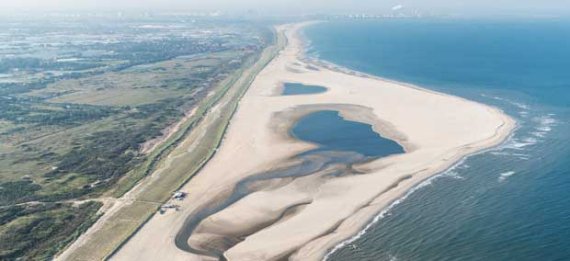An interview with Jakob Wallinga, professor of Soil geography and Landscape
What have you got against dykes?
‘Dykes protect us against flooding but they also disrupt natural processes such as the deposition of sediment. I am not saying we should get rid of the dykes, but we should create more room for natural processes. Take Bangladesh. Building dykes along the rivers is not the solution to the problems there. You’d be better off building houses on mounds, the way we used to do here.’
You are in favour of solutions like the sand motor, of the kind now being constructed off the North Sea coast. How does that work?
‘Dredgers are creating a peninsula of sand off the coast. The wind, current and waves will ensure that the sand forms wide beaches and dunes. That is building with nature. Human beings create the conditions for nature to do its work.’
Is that enough to withstand the extremes predicted as a consequence of climate change?
‘I think you can get a long way with it. It is a flexible solution. If necessary, you add more sand. We do not know exactly how high and how fast sea levels will rise. The sand motor creates a coast that shifts and adapts. A dyke does not have that flexibility. You cannot just quickly add a metre to the Oosterschelde storm surge barrier.’
Dune formation is nature’s sand motor. Can we learn anything from it?
‘I am mainly interested in the interactions and feedback mechanisms involved. About 2000 years ago, sea levels rose relatively quickly, yet the coast still expanded towards the sea over a short period. The sea was shallow so there was enough sand available. At some point that process reached a tipping point and the coast began to crumble. So there is a feedback mechanism at work there. How can you steer that process through a relatively small intervention? That is the holy grail.’

